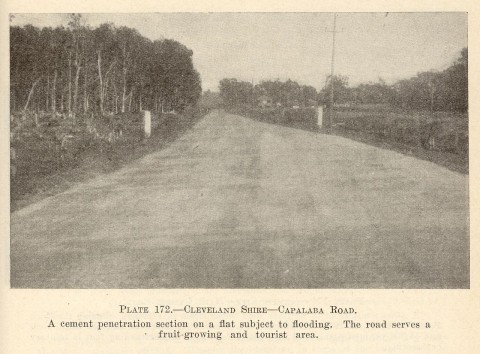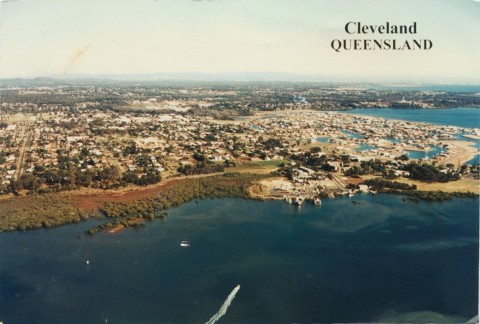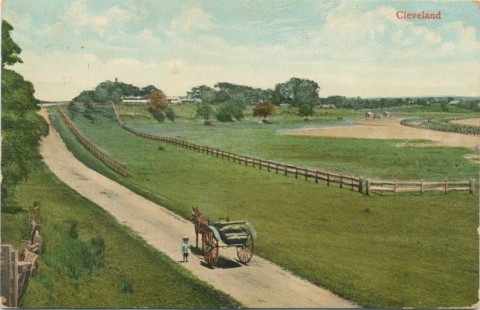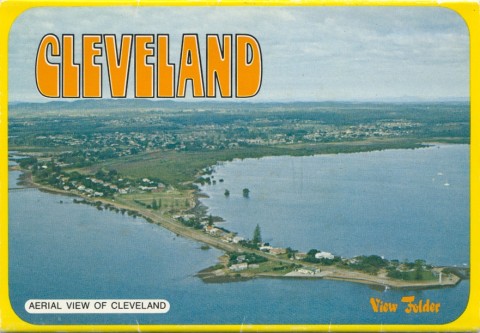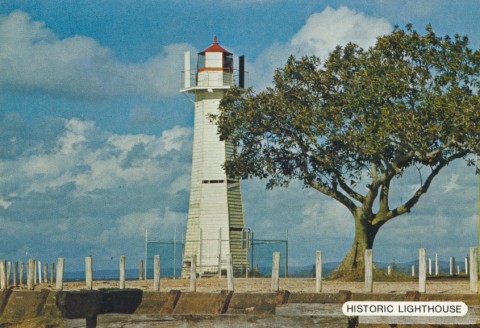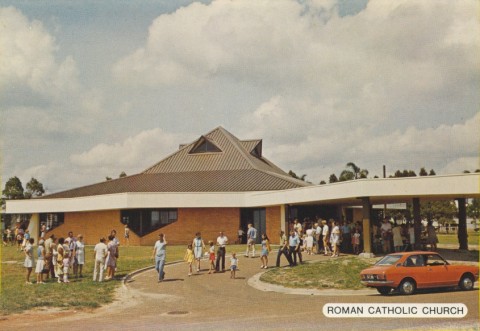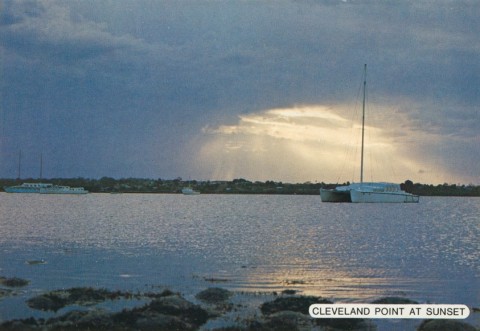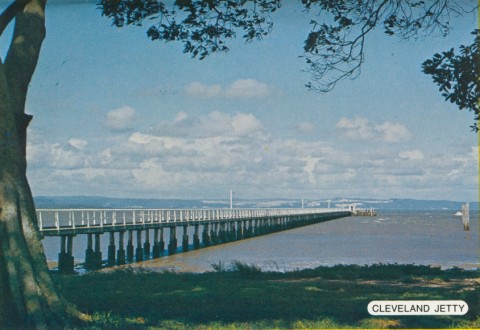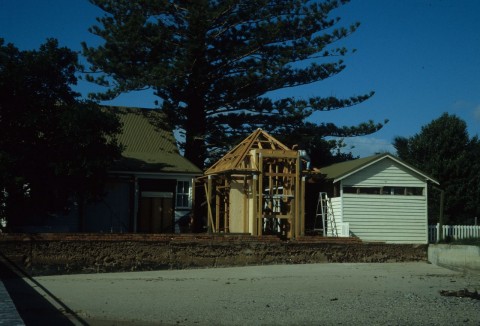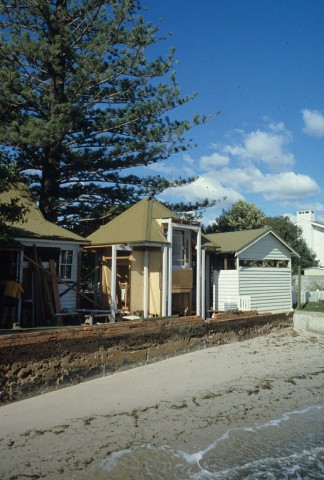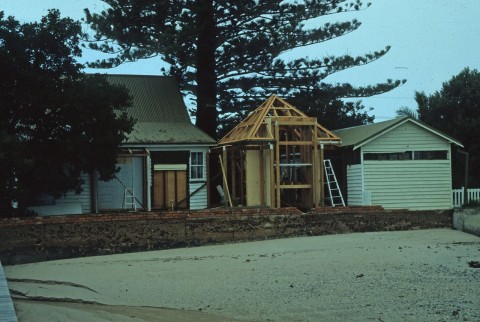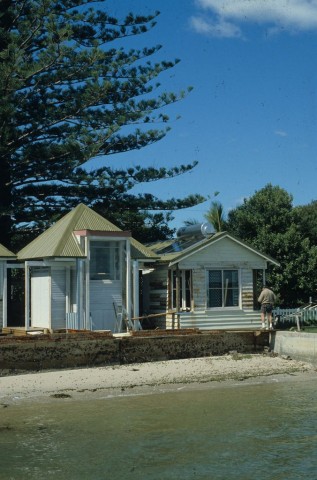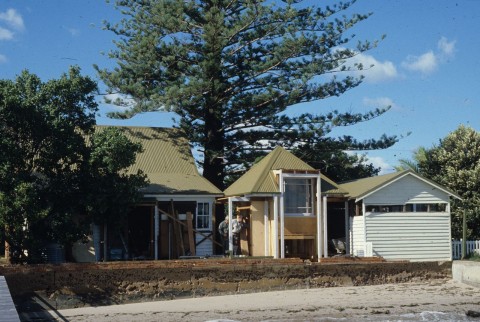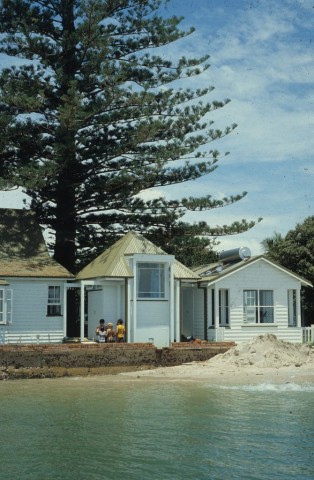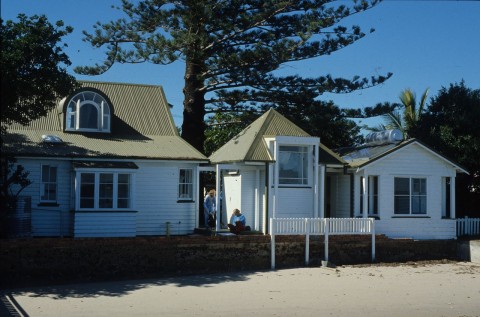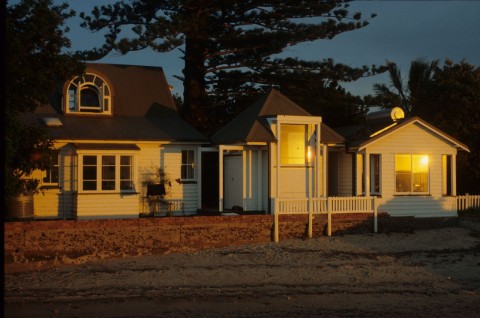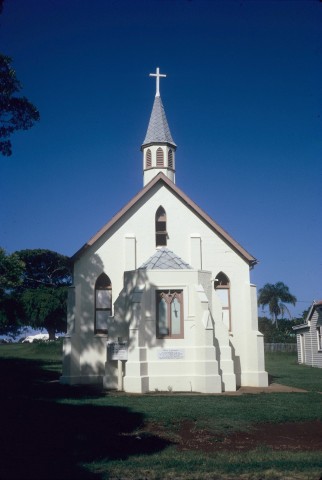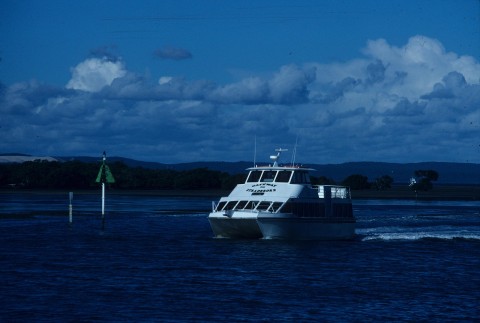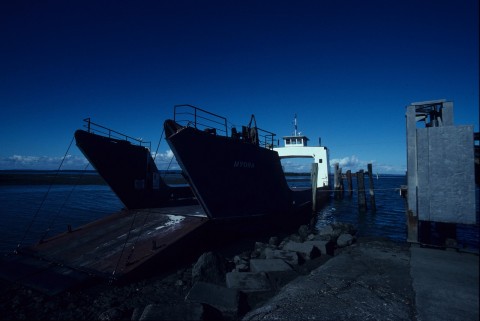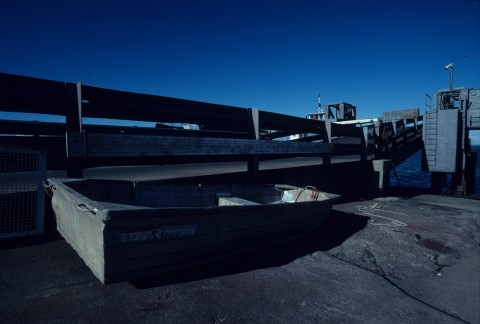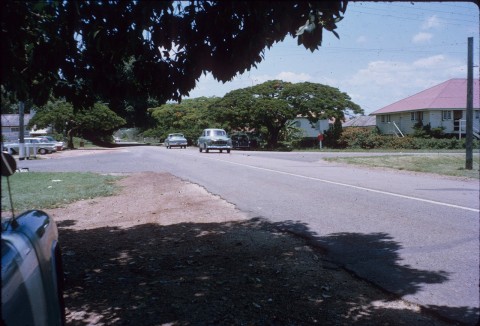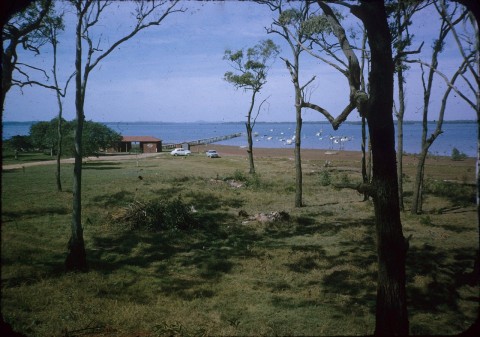Cleveland, a suburb of Redland City, is situated on Moreton Bay opposite North Stradbroke Island, 26 km south-east of central Brisbane. It was named in 1840 after the Duke of Cleveland. The suburb's northern shoreline faces Raby Bay, which was the name of the castle where the Duke resided.
Raby Bay is partly enclosed by the hook-shaped Cleveland Point, where Queensland's first lighthouse was constructed in 1864. A timber structure, it was used until 1974 when a new concrete structure replaced it. The old heritage-listed lighthouse was moved to a nearby reserve. There was considerable shipping around Cleveland Point, some to Brisbane River but much to the Cleveland port. The sand bar across the river made Cleveland an acceptable port, and for a short time it vied with Brisbane as the colony's capital. The Cleveland township was proclaimed in 1850. There was a customs house, a long jetty into Raby Bay, a woolstore and a courthouse (1853). The Grandview Hotel in North Street, Cleveland Point began as an inn in 1849; the two storey hotel is listed on the Queensland heritage register.
Cleveland's population grew to about 300 by the end of the 1870s. A school was opened in 1868, Anglican and Catholic churches were opened in 1874 and 1877, and a school of arts in 1888. Situated near the Grandview Hotel, the Anglican church is also heritage-listed. The Cleveland local government division was established in 1885, four years before the railway line from Brisbane was opened. The Cleveland railway station was east of the present station, near Passage Street. Shops and a goods yard were nearby. Cleveland remained a small but well appointed township, and was described in 1903 in the Australian handbook:
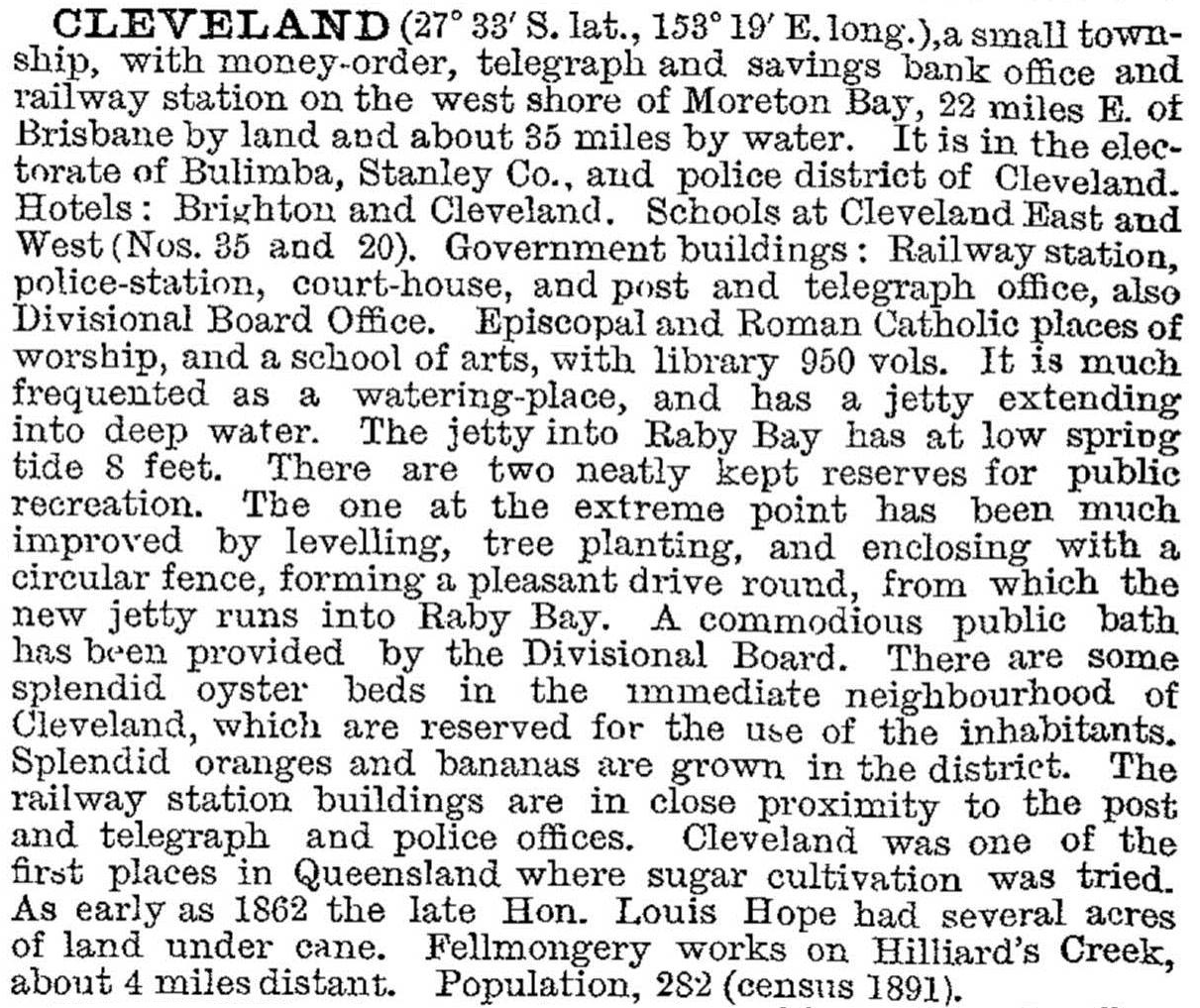
Cleveland Shire, with an area of 28 sq miles, included considerable farmland of good quality. Produce was readily railed to Brisbane, particularly bananas, citrus and strawberries. There were three hotels in the 1920s, upholding Cleveland's reputation as a watering place, as well as several stores and trades people and the office of the Redland Mercury newspaper. With rail access, the Shire's population more than tripled during 1911-47 to nearly 3400. In 1946 the Shire was described in the Australian Blue Book:
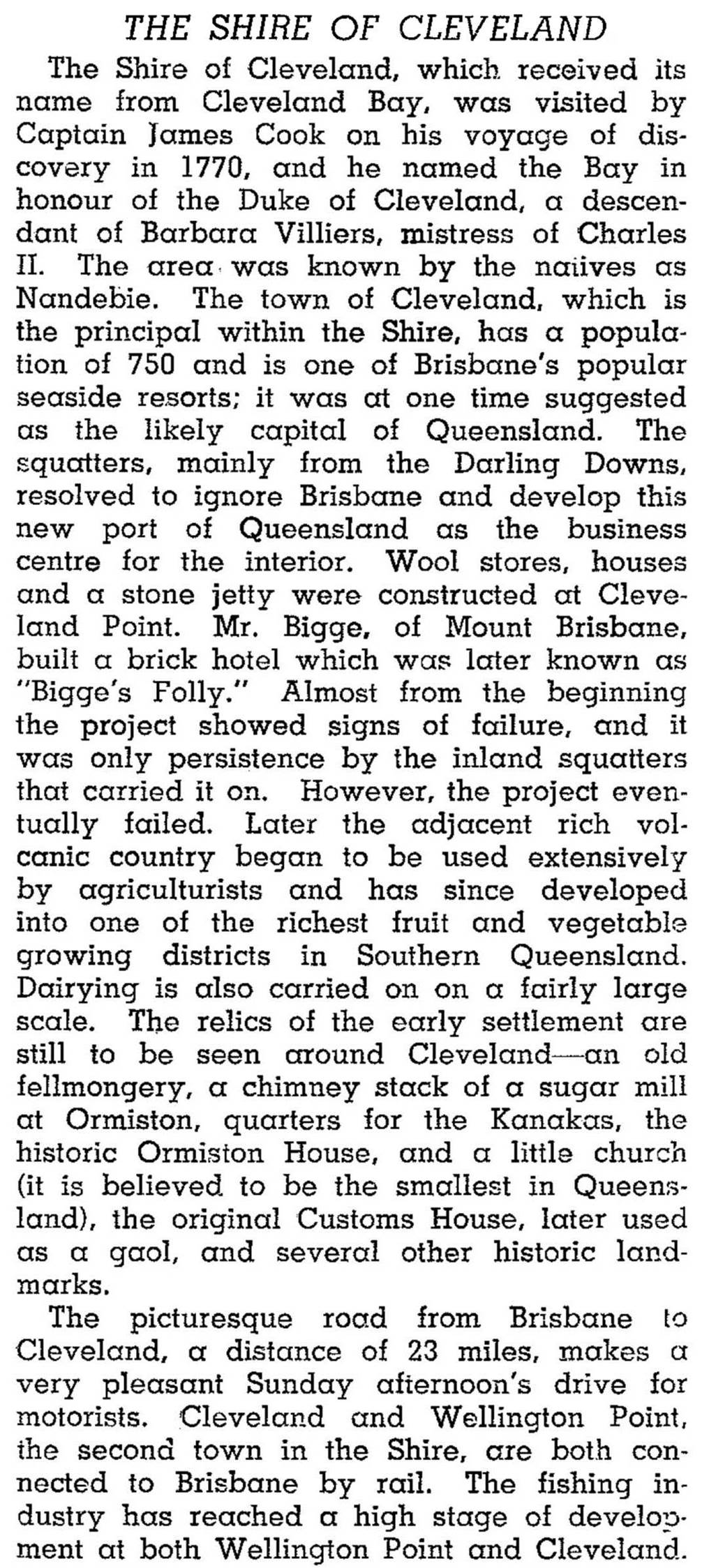
There was a railway line extension (1897) to Paxton Street near the promenade, and there was also a jetty at Paxton Street. In 1948 Cleveland Shire's boundaries were enlarged by the addition of part of Tingalpa Shire, and it was renamed Redland Shire. Shortly afterwards Cleveland's population increased, and a high school was opened in 1962. From about 700 after the war, the town's population was nearly 5000 at the beginning of the 1980s. In the mid-1980s the Raby Bay canal estate was begun, one of the most extensive developments near metropolitan Brisbane. The last canal was completed in 1997.
In 1960 the railway service was discontinued, cut back to Lota. Population growth in Cleveland forced the re-opening of the line in 1987. A passenger train crashed into the Cleveland station in 2013, injuring 19 people. The train overshot the end of the tracks and travelled 10 metres inside the station, demolishing a toilet block.
Despite the suburbanisation of Cleveland, the Shire Council has maintained a tourism ambience, particularly with its bayside and lighthouse precincts. The Bloomfield Street shopping precinct has been landscaped with numerous examples of public art, and its weekly Bayside Market draws tourists and visitors. There is a ferry service to North Stradbroke Island, near a CSIRO marine research facility. There is also a drive-in shopping centre (1984) with two supermarkets and 65 other shops.
In addition to the facilities already mentioned Cleveland has the Redland horticultural research station, a showground, public and private hospitals, retirement villages, the Redland City offices, the Redland Museum (1970) and the Black Swamp wetland. The showground precinct includes the museum, two halls and a war memorial: it was Cleveland's first civic area. The Show Society, however, disbanded in 2002.
The whitegoods manufacturer Fisher and Paykel closed their factory at Cleveland in 2009 and moved operations offshore, leaving 300 workers without a job.
Fire destroyed the Cleveland ambulance station and four emergency vehicles in 2010.
Cleveland's census populations have been:
| Census Date | Population |
|---|---|
| 1871 | 180 |
| 1901 | 276 |
| 1911 | 543 |
| 1947 | 701 |
| 1954 | 1532 |
| 1981 | 4863 |
| 1991 | 9268 |
| 2001 | 12,754 |
| 2006 | 13,585 |
| 2011 | 14,414 |
Redlands centenary souvenir 1850-1950: one hundred years of progress, Redlands Celebrations Committee, Cleveland, The Committee, 1950
Derek Townsend, Redlands: the story of an Australian shire, Australia, Derek Townsend Production, 1986
Barry Kidd, Redlands illustrated history, Capalaba, B. Kidd, 1979
St Paul's Church of England, Cleveland, 1874-1924, a jubilee souvenir, Brisbane, Hews & Co, 1924
Fred Clark and Vicki Mynott, The Cleveland roads - to 1900: from newspapers of the times, Cannon Hill, the authors, c2011
